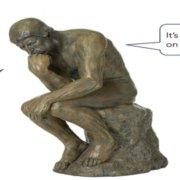Crisis Communication Tips for Senior Living Communities
EDITOR’S NOTE REGARDING CRISIS COMMUNICATION: Like everyone else around the globe, we’re struggling with this new reality due to the COVID-19 pandemic. Heartbreaking stories of loss and grief and a world economy inching towards recession are just some of the things keeping us up at night.
As a senior living marketing agency, we’ve been thinking about all our clients as they face these unprecedented times. It’s hard to see past this pandemic since we’re only in the early stages, but at some point, we know we’ll begin to adjust to this “new normal.” The articles we’ll be providing during this time are designed to help senior living sales and marketing teams when they’re ready to move forward.
Crisis Communication: Appropriate Messages during COVID-19
The messages your senior living community puts out during a crisis matters. You’ll need to halt salesy messaging like “Schedule a Tour” or “Join Us for Lunch” and focus on complete transparency. Yes, transparency should always be the foundational element of your sales and marketing messaging, but let’s face it: in normal times, messaging doesn’t always sound like that, does it?
But we’re not living in normal times. So things NEED to shift to 100% transparency.
The crisis communication messages you should be sharing:
Community-wide/General
Your leadership’s clear and direct response to COVID-19. You should have a call-out in the header area of your website with a clear link to your community’s full response. This response should include basics, like how your community is addressing the outbreak, visiting hours, important phone numbers, and how you’ll be delivering updates. Check out this blog post for more tips.
The various ways your community is supporting residents, staff, and their families. Social media is an excellent way to share real-time images of your community’s social distancing efforts, cleanliness efforts, and modified activities in the Age of COVID-19. People crave reassurance during this time. Visual images can go a long way in helping. (This goes without saying, but under no circumstances should you “stage” any photos. Be real. Be authentic.)
Unvarnished truths. No sugarcoating is allowed. Don’t try to convince people that they’re better off in a community when all credible news reports are constantly reminding us about social distancing. Instead, talk about how your community is helping everyone stay safe and adjust to new realities. At the same time, you can and should absolutely share solid truths. For example, if your community is indeed fully stocked with food, cleaning supplies, and medical supplies, that’s a reassuring message that people will want to hear.
Safe, actionable things that family members can do to support their loved ones. This is likely going to be one of the biggest things you need to focus on—the feeling of helplessness that so many family members are going to have when it comes to being able to connect with their loved ones. Some ideas:
- Provide iPads to residents for scheduled FaceTime/Skype sessions with family members. (Obviously, you’ll need to thoroughly clean the iPads between use.) PROMOTE this activity on social media, your website, and in email communications.
- Remind family members that seniors love getting real letters and cards.
- Allow visual contact on your grounds, when possible and safe. We love this story about a granddaughter safely sharing the news of her engagement with her granddad.
Marketing and Sales: Changes to Messaging
Update the messaging in paid advertising. Paid campaigns will need to have different calls-to-action for the time being. Again, halt the “schedule a tour” messages and focus on “virtual experience” items. See this previous blog post for ideas regarding that.
Pause lead nurturing OR update it to reflect the current situation. If you let your automated lead nurturing simply continue “as is” during this pandemic, your community will come across as out of touch and incredibly insensitive. So pause all campaigns OR update every email with a simple disclaimer at the top about COVID-19 (in italics, in a different font—something to make it clear there are humans behind these emails). Double check subject lines and revise any that are too cute/clever.
Review any scheduled social media posts. If you schedule out your social media posts, take a moment to review everything that’s scheduled and pause, delete, and revise, as needed. Remove any posts that are too self-promotional. Make sure you’re sharing a good mix of COVID-19 related messages (see first section above).Be mindful about third-party posts that you share. ONLY share from credible organizations like the CDC or your local department of public health.
Consider shifting some digital marketing dollars to more traditional direct mail efforts. Direct mail might have a better chance to stand out since more people are at home right now. Reminder that we have a turnkey solution for your direct mail efforts: SMARTbrand (including a basic free plan).
Update email signatures. Your marketing and sales teams should update email signatures with a link regarding your community’s response to COVID-19 and provide a way to “virtually” meet, like a link to an online scheduler.
With COVID-19, things are changing hourly, and recommendations will change.
What we recommend now could change tomorrow or a week from now. If you need help with your crisis communication plan and messaging, call us. We’ve worked in senior living communities for decades and know what it’s like during times of chaos. Let’s chat soon.











